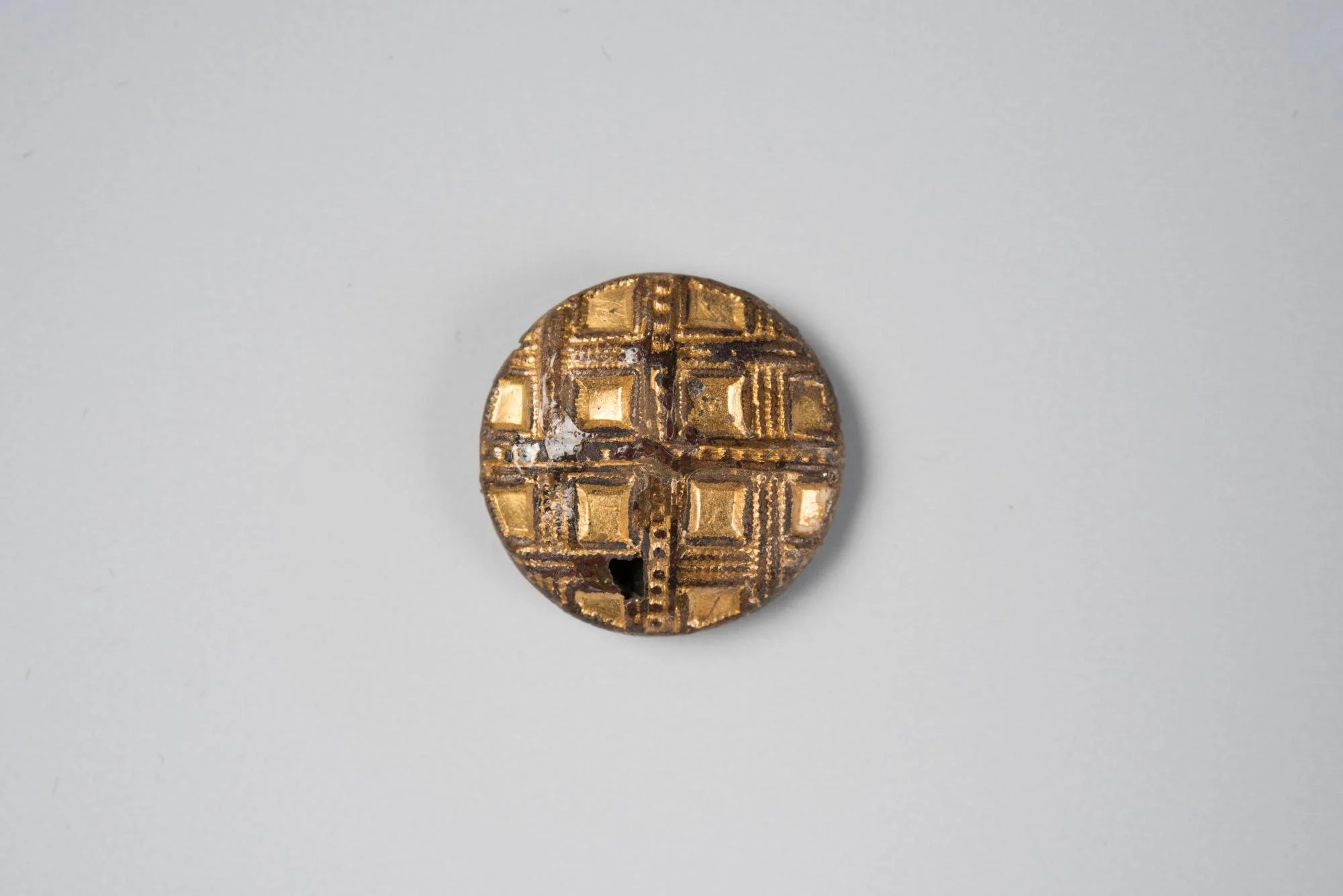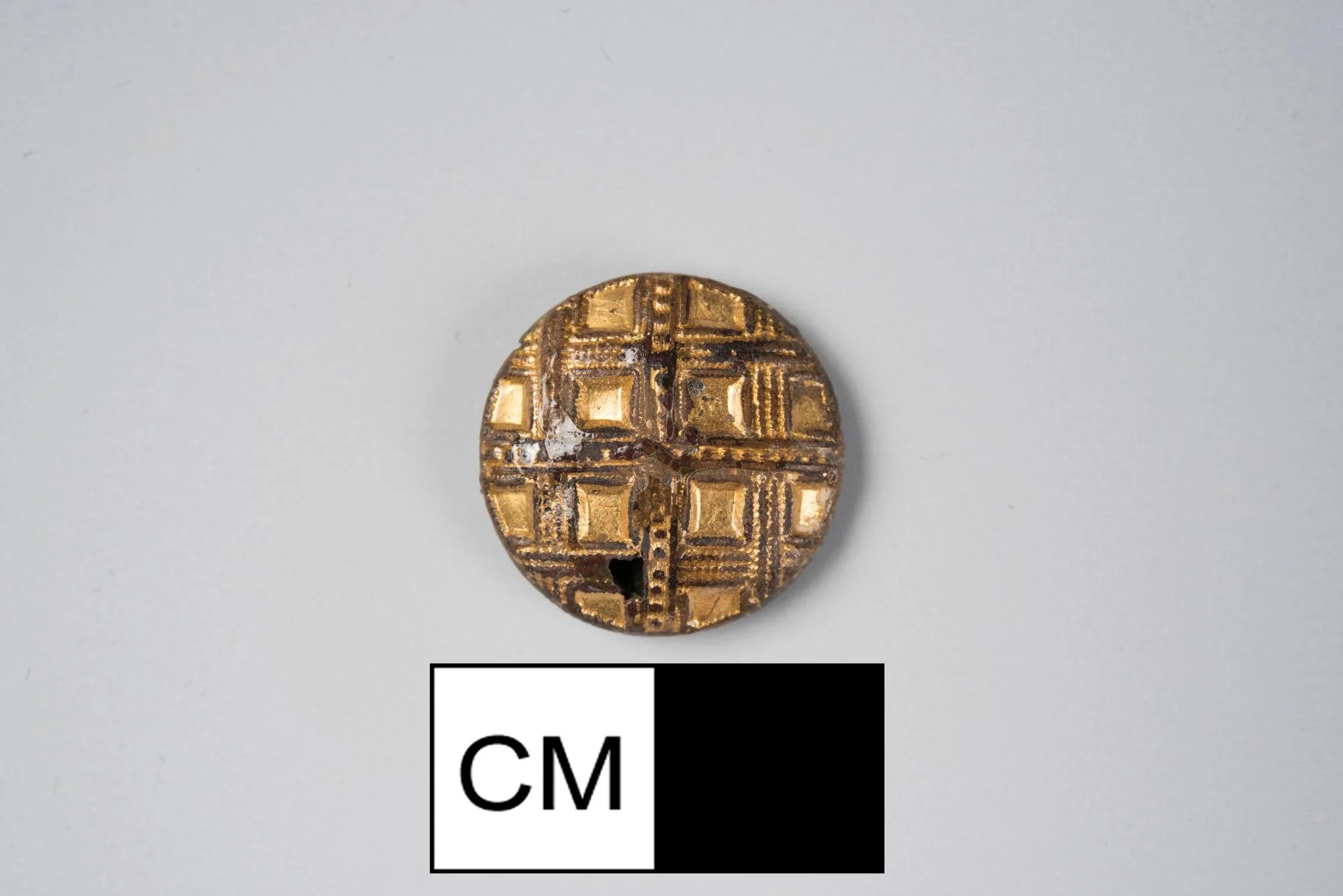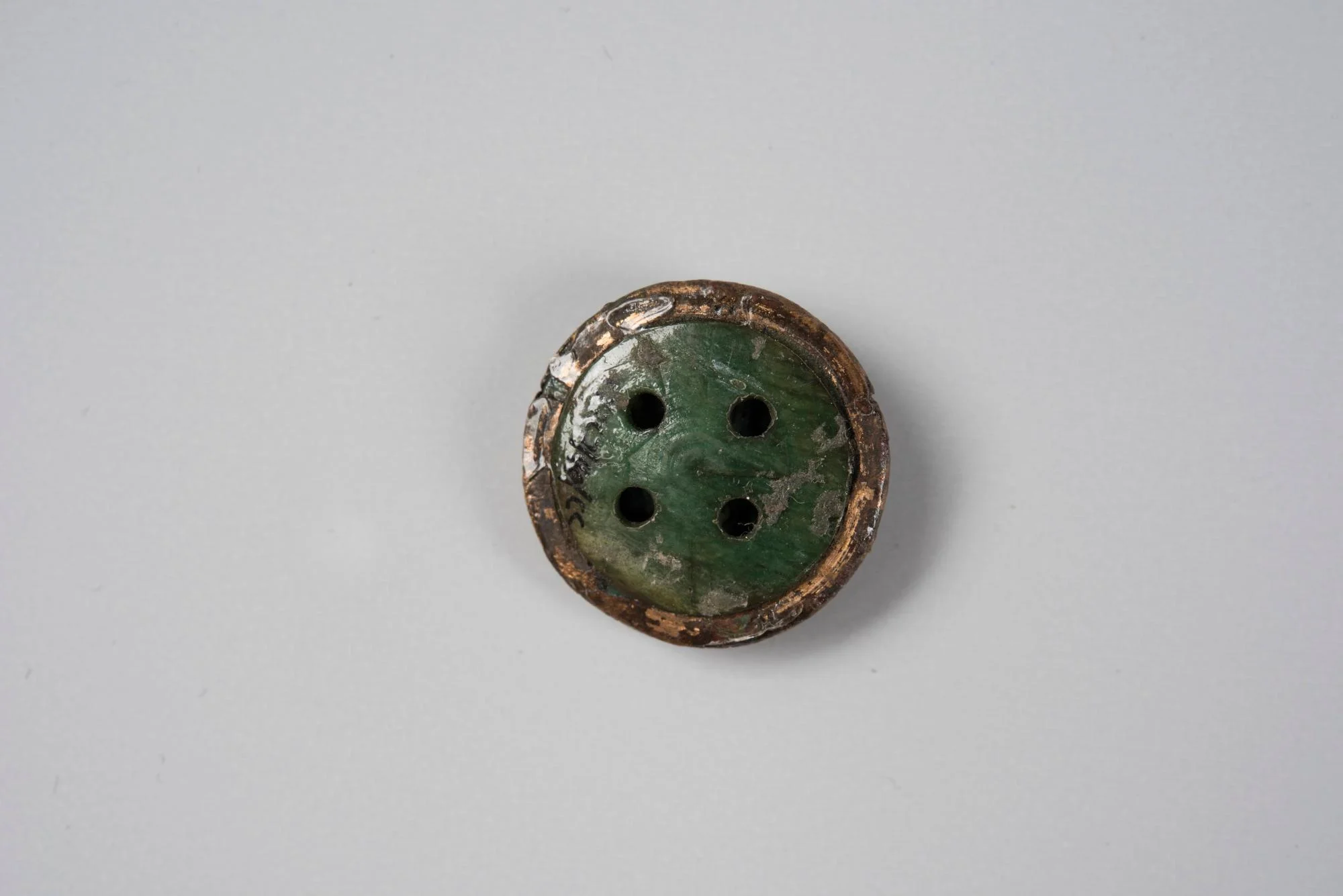Notes
This a two piece button with gilt and basketweave decoration. In this style of button, a disk of lathed bone with a beveled edge often served as a button back. In the earliest examples of this style from the mid-eighteenth century such as this example, four eye holes were drilled into the bone back, through which cat gut was strung to form a shank to attach the button to clothing. The face of the button was fashioned from a sheet of thin metal, usually a variety of copper alloy, which would be crimped onto the back along the beveled edge of the bone back.
These copper alloy faced buttons were often embellished with various forms of decoration, among them gilding and impressed designs. Intricate designs were achieved by hammering the covers into engraved molds which bore design elements prior to affixing them to the button back. This face displays a fine design arranged in a basketweave pattern comprised of raised hobnails and linear cordage and beaded elements.
In the eighteenth century, buttons came in a variety of shapes and sizes. Sometimes this variation can be used to identify which articles of clothing a button may have been used in the past. The diameter of this button indicates it was for use on a coat or waistcoat.
Object Type
Has it Been Conserved?
Yes
Where Was It Found?
Project Site: House for Families [more details]
Material
Manufacturing Technology
Form
Shape
Completeness
Decorative Technology
Decorative Notes
Cast gilt basketweave design
Date
18th century
Country of Origin
Dimensions
15.4mm x 4.4mm x 15.74mm (W x H x L)
Illustration shows object in comparison to the size of a quarter
Weight
0.7 gram(s)
Object Number
1787872
DAACS Number
1787872
Project: House for Families
The structure identified as the “House for Families” on the 1787 Vaughan plan likely housed the majority of the enslaved population living at the Mansion House Farm for much of the second half of the eighteenth century. The building was in existence from circa 1760 until it was demolished in late 1792 or early 1793. The archaeological evidence for the structure consisted of a brick-lined storage cellar (44FX762/40-47) measuring roughly six feet by six feet. Historically the cellar served as a handy trash receptacle once it ceased to be used for its original storage function, and through extensive excavation has yielded an extremely rich assemblage of household refuse. The analysis of these remains offers the opportunity to study important aspects of the daily lives of Mount Vernon's enslaved community.
See All Objects From this Dig


 Buttons
Buttons